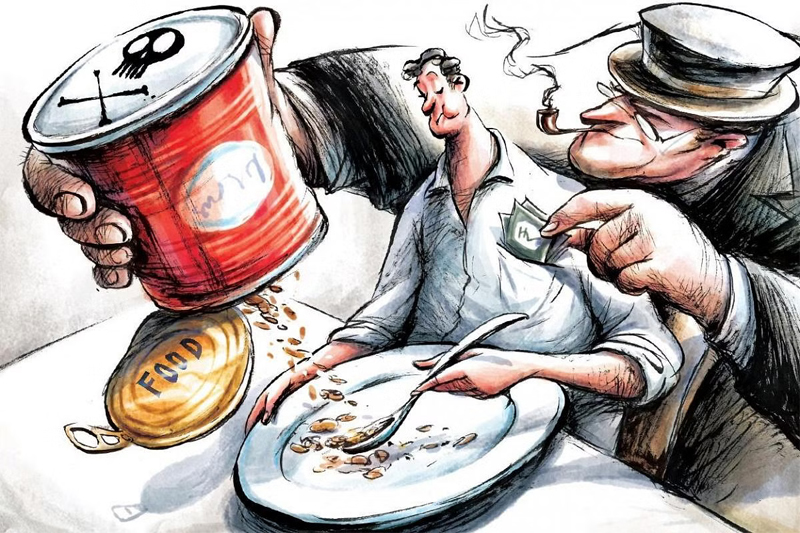
Harish Bijoor
The old brands of yesterday cannot take things for granted anymore. Expect a generation of consumers who are that much more careful in what they put into themselves.
Everything is cyclical. Take food for instance. In the beginning, it was good old home food. Food that was nutritious, cooked with care and the utmost standards of hygiene. When people got bored with the same old taste at home, in came the small local restaurant, offering something different. Yes, the strict hygiene standards of good old home food may have been sacrificed, but there was always something there that you could not get at home. The small restaurant then led to the bigger one and then to the even bigger Quick Service Restaurant (QSR) chain that served the burger, pizza and vada pav. Taste, hygiene and serving sizes were standardised.
And then came packaged food. Packets you could open at home and pop into the microwave with all the convenience and hygiene standards you craved for—all within the confines of your kitchen.
But people are fickle folk. When packaged and QSR food became too “common tasting”, the very same palate went looking for the different and the healthy.
This voyage of rediscovery strangely led us to gourmet health-food chains, which inevitably took us back to good old home food, cooked by you to suit your taste, and eaten with relish. At a price that was unbeatable as well.
Delve into the realms of food, beverages, clothing, dwelling, entertainment and the other myriad realms of our day-to-day life, and you will see a trend that is cyclical. Going back to where we came from seems like a tendency that has its own resonance as the world wants to be a better place to live in. Every product we use today, and indeed every item of food, beverages and clothing we tend to have is demanding a relook. And expect more of this scrutiny in the years to come.
The week gone by saw one such scuffle. The prime enemy here was sugar. A health and nutrition influencer on Instagram posted a video showcasing the main brand of a company, with a deep scrutiny of its contents. In this case, it was a malt-based drink loaded with sugar to make it taste the way it does. The influencer called out the high sugar content in the children’s drink in the diabetes capital of the world—India. The beverage in question is said to offer 7.5 g of added sugar in each serving of 20 g. And 7.5 g of sugar equals 1.5 teaspoons per serving.
The influencer, Revant Himatsingka (‘foodpharmer’ on Instagram), quickly garnered 12 million views on Instagram, with the likes of Paresh Rawal and R Madhavan reposting the video, and all hell broke loose. Marketing hell. A part of that hell included memes that put the brand in the dock and every other malt-based drink under scrutiny. Add to this frenetic discussions online on the harmful effects of sugar, and a legal notice to ‘foodpharmer’.
Himatsingka quickly apologised and took down the post, but the harm to the brand had been done. A world of consumers was talking about sugar contents in their otherwise favorite packaged products. This was a raging storm in a cup of malt. A storm created by a social media “influencer”. In this case, a social media “dissuader”.
The food you and I eat is under greater scrutiny today. This event and incident apart, expect a generation of consumers who are that much more careful in what they put into themselves. Society is getting rightly and indignantly vigilant.
The old brands of yesterday cannot take things for granted anymore. At least not when it comes to ingredients that fall under what I call socially ostracised categories of content. Into this list I add sugar, oil and salt for a start. Expect a lot more to creep into this list as the years go by.
There is emerging a negative list of contents. A long list of items that will need to be explained. Empty calories will be under scrutiny just as calories themselves will be under the consumer microscope of examination. Social media influencers and dissuaders will play a big role in this movement—which has just begun.
Brands and companies handling products that tread into the terrain of added sugar, salt and oil will need to be watchful. The key idea is to cater to a consumer who does a complete due diligence on what is being consumed. While in India this due diligence is left to the consumer to do (after the food and packaging laws have done their bit), countries such as France have actually put together country-mandated specifications that need to be adhered to. Pick a big global burger chain in Paris and pick one in Pune—it is quite likely you might see a big degree of variance in terms of the sugar, salt and oil content. Different standards for different countries is the norm then that many companies follow. Why?
Indian consumers are going to be progressively asking embarrassing and worrying questions to brands. Brands cannot, therefore, hide behind the fact that this is the way it has been for decades. Things need to change with the times.
Brands need to get back to the drawing board and set right their ingredient mix to match the growing health standards and concerns of consumers all over. If brands don’t do this voluntarily, they will be forced to do so by their consumers. This movement, which aims to set right the ingredients based on health requirements of the unsuspecting and unknowing consumer, will run at four levels.
One is at the level of the government, where companies are clearly instructed on the amended norms for the use of sugar, salt and oil in their offerings.
The second will be a voluntary movement by the company concerned: the first step would be matching their ingredient mix to their global best standard mix. If Parisians are concerned about their health, so are Punekars. Different standards for different people are not great at all.
The third-level movement will be one led by intermediaries and pro-consumer entities embarking on a campaign à la “Jaago Grahak Jaago” in New Delhi.
The fourth level is really the one led by the real consumer. When consumers switch off brands that overload on these three socially ostracised categories, i.e., sugar, salt and oil, brands will definitely switch on their action mode and act.
I do believe all four modes of action will happen simultaneously in India. Even as it does, time for every brand in India to do a quick due diligence and correct their buying patterns of sugar, oil and salt. This is relevant for every category of food and beverages.
And then hopefully, this will lead India’s next generation onto a healthier path with more fulfilling lives.
(The writer is the Brand Guru and Founder, Harish Bijoor Consults Inc)(Courtesy: The New Indian Express)





